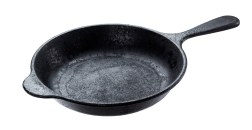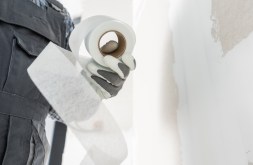Starter’s Guide to Coin Collecting
Perhaps you just inherited bags full of coins or maybe you are at that stage in life where you are looking for a new hobby to take up. Coin collecting is a great hobby that can be exciting for people of all ages and from all socioeconomic backgrounds. Numismatists, or those that collect coins, continue to grow in numbers as it is not only a fun hobby but can also reap tangible financial rewards as shown in the coin dollar value chart. In January 2013, the 1794 Flowing Hair Dollar sold for over ten million dollars. To start collecting, first decide on the type of coins you want to collect, learn what makes them valuable, know where to find them and understand the different materials they are made from.
Coin Types
There is a wide range of coins and denominations to choose from for your collection. You could choose by the year, such as collecting all of the U.S. dollar coins from the Eisenhower dollar denominations which were minted from 1971 to 1978. Or perhaps attempt to collect all the Lincoln coins for every year they were minted, which dates back to 1909. Those that want even more of a challenge may take up trying to create a comprehensive date collection which involves collecting each of the dates and mintmark combinations. While this may take much more time and commitment, it may be worth it in the long run if you come across a rarity.
Error Coins
Error coins are much more difficult to find as they are usually in circulation for a short window but often quickly withdrawn and destroyed. Because they are rare to find, they often hold a much higher value than their face value. Some of the common errors to be on the lookout for include blank planchets which is when the coin is not actually struck by the die, the minting device that strikes an image on the blank coin, or planchet, therefore it holds no design. An off-center strike is another rarity which is when the face of the coin only shows part of the design. It is even better if it is missing most of the design but still holds the date. Mule coins are unique in that they have two designs that weren’t intended to be used together. One of the most common examples can be found on the Sacagawea Dollar/Washington State Quarter which has the front, or obverse, showing a Statehood quarter and the reverse of a Sacagawea dollar. One of these that was discovered sold in August 2012 for $155,250.
Finding Coins
Once you have decided what you want to start collecting and know what you are looking for, it is just a matter of going out and looking for the desired coins. But where do you start? One easy way is to look at your pocket change and see what you already have. Once you know what you already have, head to your bank and order rolls of coins which may have rare, old or error coins. If you want to do a bit more work, take up metal detecting. On top of finding old coins, you may also discover other small metal gems. Coin dealers are also a great place to go for buying and selling. Usually, they will have the coins that aren’t in circulation anymore and may just have what you are looking for. Another fun and interactive way of looking for your desired coins is by going to garage sales and flea markets. Just be careful you aren’t purchasing a counterfeit coin as many will try and trick you.
Material
The coins themselves come in a wide range of material. In general, the most common metals used in minting United States coins are copper, nickel silver and gold. From 1864 through 1982, the one-cent coin was made from 95% copper but the government decided to use cheaper metals and it now is a copper-plated zinc composition.
The nickel is surprisingly not made completely of nickel. It was initially 75% copper and 25% nickel but during the Second World War, nickel was rationed for war purposes so they started to be composed of 56% copper, 35% silver and 9% manganese. Dimes and quarters were minted from a 90% silver composition but as the price of silver increased in 1965, the coins started to be stricken from copper-nickel. Half dollars from 1794 through 1965 were also made of 90% silver and brought down to 40% but eventually completely eliminated silver content from the current circulating half dollars.
Tips
Once you have a start to your coin collection, do not just throw them in a Ziploc bag or any type of plastic bag as this could actually damage the coin even more. Rather, purchase a coin booklet which allows them to sit in snuggly without having to be handled too much and helps keep things organized. If you do need to pick up the coins, make sure to hold them on its edge between the thumb and index finger. Even better, grab a pair of gloves that will keep the oil from your hands from being in contact with the surface of the coin which can cause discoloration. One of the most important tips though is, whatever you do, do not try and clean them even if you think they will make the coin look better. Chances are, it will actually decrease the value by 50% or more. Imagine finding a five dollar gold eagle coin that can have the value of a few thousand dollars be dropped down to a few hundred just because it was cleaned.





